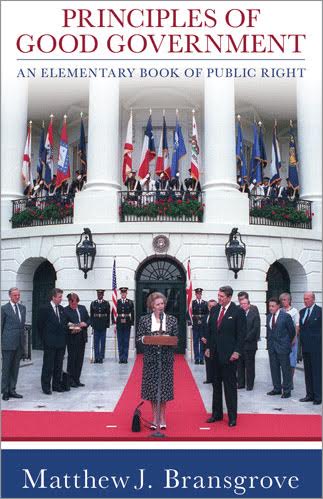The hierarchy of laws is the relative ranking of the five different types of laws. These are (in order of precedence):
- the constitution;
- legislation passed by initiative;
- legislation passed by the legislature;
- delegated legislation;
- the Common Law.
Law courts enforce the hierarchy by disqualifying laws that conflict with a law of higher precedence. Respect for this hierarchy of laws is fundamental to the rule of law. However, judges often ignore it because as judges in their own cause they have the ability to breach their trust and leapfrog the Common Law above its proper station by claiming it is part of the constitution.
1. The constitution
The people are the only legitimate fountain of power, and it is from them that the constitutional charter, under which the several branches of government hold their power, is derived.
—James Madison. The Federalist No. 49, February 2, 1788.
The constitution is the foundational legal document of a jurisdiction. It is a compact between the people, by which they agree to be bound by its provisions and by laws made in accordance with it. All executive actions, bureaucratic actions, and all legislation must be able to trace their authority back to the constitution.
2. Legislation passed by initiative
Legislation passed by direct vote of the people ranks above legislation passed by the legislature. Legislators are only agents of the people, thus when the people enact laws they do so as principals, overriding their agents. The constitution should not allow the legislature to repeal or amend legislation passed by initiative. To do so would destroy the utility of the initiative as a check on the power of the legislature and give agents the ability to override their principals.
3. Legislation passed by the legislature
Legislation passed by the legislature is subordinate to both the constitution and legislation by initiative. Constitutions that allow a super-majority of the legislature to approve constitutional amendments or to reverse initiatives undermine the rule of law (as the lawmakers are no longer subject to the law).
4. Delegated legislation
Delegated legislation (also known as regulations or subordinate legislation) is created by executive officers or bureaucrats under authority granted by legislation. Delegated legislation is void if it contradicts or overrides either primary legislation or the constitution.
5. The Common Law
At the bottom of the hierarchy of laws is the Common Law. Every case that comes before the courts is slightly different; legislation cannot provide for every circumstance. The Common Law is the grout that fills in the cracks. It is a necessary evil because unelected judges are effectively making law. However, this evil is almost entirely mitigated by the principle of stare decisis et quieta non movere: “to stand by and adhere to decisions and not disturb what is settled.” By requiring judges to follow the reasoning of judges in previous cases, the discretion of the judges is effectively whittled down to almost nothing. In this way the law becomes settled and predictable, and the rule of the written law (contained in the casebooks) prevails over the arbitrary whim of the judge.
In making their decisions, judges must avoid inventing law. To achieve this they must follow:
Binding precedent
- the reasoning of appellate courts above them, in order of seniority;
- the reasoning of judges in the same jurisdiction at the same level as them, even when they might have reached a different conclusion, but not if they themselves manifestly breach precedent;
Persuasive precedent
- the reasoning of appellate courts in related jurisdictions;
- the reasoning of trial judges in related jurisdictions;
- the reasoning of appellate courts in less-related jurisdictions, on analogous legislation.
A judge is required to ignore his own understanding of the constitution if a binding precedent is contrary. This is because constitutional interpretation is a question of opinion, and the system requires that the opinion of the higher courts outranks the opinion of lower court judges. This renders the Common Law predictable, even if wrong. If the supreme appellate court is wrong, then the correct check is to legislate around the error, amend the constitution, or reconstitute the court. The appellate courts should be reluctant to depart from their own decisions, but in cases of erroneous jurisprudence, they should be at liberty to do so.

